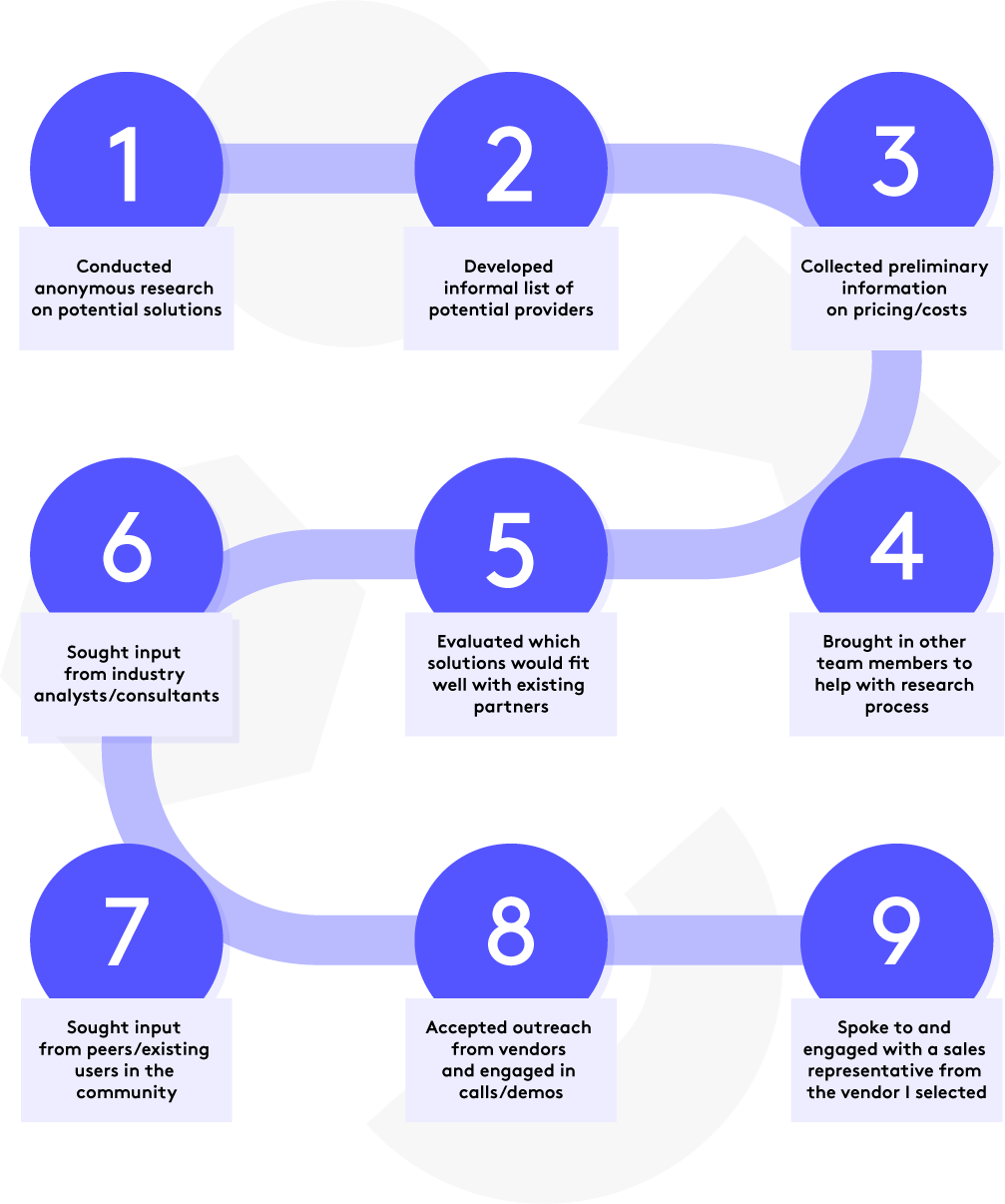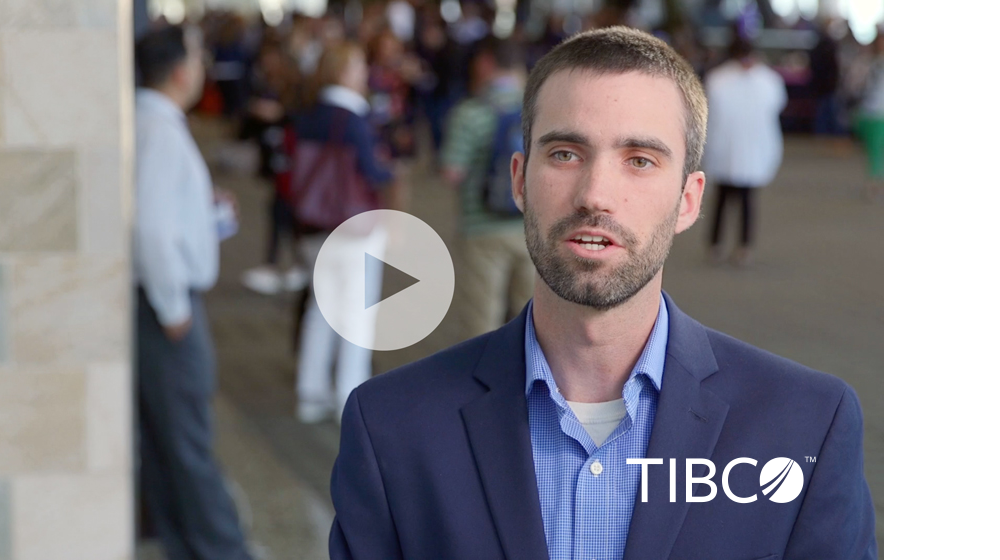Go Beyond The Email Drip Campaign: How To Level-Up Your Nurture Strategy

In its 2021 B2B Content Marketing Report, the Content Marketing Institute found that only half (49%) of content marketers feel they are successfully using content marketing to nurture their audience. With overflowing inboxes and a large portion of your addressable market not opted-in to your marketing emails, it’s time to transform your current nurture strategy into a fully-integrated omni-channel approach. With the right data and information at your fingertips, you can build out an omni-channel nurture strategy that goes beyond old fashioned form fills, hard content gates, and email marketing. Keep reading to learn how to grow your nurture strategy!
Nurture
A communication strategy that places content in front of prospective buyers at various points in a customer’s journey. PathFactory takes a wider view of nurture, seeing it as an omni-channel approach to serving content to a target audience to accelerate a buyer’s readiness and conversion.
—
The evolution of the nurture strategy
In DemandGen’s 2022 State of Sales Acceleration report, it was found that B2B buyers only spend 17% of the buying process talking to potential vendors. That means buyers spend the majority of their time self educating through content consumption, which is why it’s important to make your visitor’s experience as engaging and seamless as possible. With 80% of buyers saying that a vendor’s content had a positive, significant impact on their buying decision, it’s clear that content is one of the best ways to turn your prospects into customers. However, there are multiple touchpoints before a conversion even happens. From anticipating the type of content the reader will want, all the way to actually delivering the content to the reader, makes up what we’ll call omni-channel nurturing.
Have a look at DemandGen’s buying process timeline, published in their 2021 B2B Buyer’s Survey Report. This timeline is helpful when considering when to start firing off your nurture tactics.
What was your timeline for taking the
following steps in your buying process
This timeline reflects the highest percentages respondents indicated for each step
What stands out to you here?
For us, there are three things that can help us think about a nurture strategy:
1. The buyer journey is largely an individual one.
The first seven steps of the buying process include product research at the buyer’s own pace. There are moments of collaboration, but the information gathering stage is largely done solo, and then maybe shared with a wider team.

2. In all buyer journeys, content is king.
During each buyer journey, people are consuming all types of information, from how-to guides to webinars, that help them make a purchase decision.
Do you have enough content to keep up?
3. The most crucial part of the buyer journey is complete before a sales person even makes contact.
You’ll notice that the first human interaction a buyer has with your company is at the second-to-last step, after they’ve done all the initial research. This means you’re not turning your unknown visitors into known visitors until a large part of the buying process is over. Imagine the possibilities if you could learn who your prospective buyers are early on in the process.

PathFactory data shows that nurturing visitors in real time translates into 2x the amount of MQLs, on average. Invest time in understanding what an average buyer journey looks like for your product; it’s an invaluable piece of information that will help you learn what touchpoints result in the most engagement.
Let’s do a quick pulse check: do any of these statements describe your current nurture strategy?
“Our visitors love our content, but once the sales team has the lead, the marketing team is out of the loop.”
“We use email drip campaigns that lead people to a piece of content. It hasn’t been generating significant leads for us.”
“It’s difficult and time consuming to build nurture programs that are automated. How do we know what content will be the best to showcase?”
“Our team is always debating if we should gate or un-gate our content. We want less friction for the buyer, but also don’t want to lose engagement metrics.”
If any of these lines sounds familiar, you’re not alone and there’s a better way to think about your pipeline. Even better, a data-driven nurture strategy leveraging content intelligence has benefits that extend beyond simply generating leads.
Nurture can:
Help align sales and marketing teams.
Forget about the days when marketing teams would throw a lead over to sales and be done with it. With an omni-channel nurture strategy, sales and marketing work together to understand what target accounts need to make buying decisions. DemandGen reported that a quarter of marketers are focused on improving alignment between sales and marketing in 2022, so the need for tools that help both teams communicate are more important than ever.

Help you find the folks you should be targeting (and the content you should be targeting them with).
A good nurture strategy turns unknown visitors into known visitors, giving you more information about your readers at every step of the way. Considering 96% of people who visit a B2B website not even prepared to buy, you’re only given a few chances to learn about the type of information your visitors are looking for. It’s important to stay relevant and top-of-mind, so when the person is ready to buy, they remember your product.

Allow your customers to self-nurture, binge content, and self-qualify.
PathFactory found that 20% of visitors will consume more than one content asset, and an average of 4.7 assets per session. In addition, bingers (people who consume more than one piece of content in a single session) are 3.2x more likely to submit a form while on their content journey. If you make it easy for your visitors to binge your content, they’ll do it!

Case in point:
B2B business intelligence software TIBCO used PathFactory to increase their sales opportunities by 5x! TIBCO’s original nurture program involved a series of emails, each containing a single content asset. None of these assets had a next step, leaving customers hanging until the next email was delivered. Beyond the click, the team had zero visibility into whether customers were actually engaging with the content, or what impact that engagement had further down the funnel. As a result, the program lacked agility and lead qualification was inaccurate.
TIBCO decided to ditch the drip email campaigns in favor of creating a personalized content experience. The team put all their nurture assets into carefully-curated content tracks using PathFactory’s Content Insight and Activation Platform, meaning buyers are always served the next-best asset and can self-educate at their own pace. By incorporating PathFactory’s Engaged Intent data into Marketo’s lead scoring, they’ve raised the bar on what ‘qualification’ really means. The results? A 27% increase in MEL to MQL conversion rate, as well as a 5% SAL to SQL conversion rate.
Don’t you forget about me: using nurture during post-sales

If it’s not clear yet, PathFactory approaches nurture with a wider lens: instead of focusing solely on capturing leads and moving them through a static funnel, more emphasis is put on the omni-channel touch points presented to customers through their buyer journey. To their detriment, many B2B companies focus too closely on becoming lead generating machines, concerning themselves with passing leads off to the sales team. But imagine if your nurture strategy didn’t stop when a customer signed on the dotted line. While it’s important to nurture prospects and close deals, it’s just as important to show your existing customers you haven’t forgotten about them.
Using similar nurture techniques that would be employed during the buyer journey, PathFactory customer Cisco boosted their customer adoption 3.5x by serving up post-sales content to their 300,000+ partners. In order to improve technology adoption in their subscription products, Cisco needed a strategy to engage customers in the post-sale stages of the customer lifecycle. Knowing their customers are 80% more likely to realize the full value of products (and eventually renew) if adoption takes place in the first 30 days, they needed a way to help buyers self-educate faster.
When it came to getting information and resources in front of their existing partners, Cisco knew that email wasn’t the answer; they were already feeling overly dependent on email as the main communication channel. Using PathFactory, Cisco created separate content tracks to deliver a personalized content experience to their partners, depending on the type of information they should be receiving. The result? A 130% increase in content consumption, a 24% increase in closed-won revenue, and higher rates of retention since the partners can now realize the full value of their subscription.

Elevating your omni-channel nurture strategy
Whether you’re just getting started or leveling-up your current approach to optimizing your omni-channel nurture strategy, it’s important to acknowledge that every company is at a different stage in their process. In the section below, learn about the three maturity stages and their accompanying tactics so that you can find out where your company fits in.
Experimental: —
“We have a mediocre understanding of our customers’ various buyer journeys and we’re using a few analytics tools to track engagement. How can we get more out of this?”
-
My company has identified the most-popular content we have, and we have a few channels that we know work well.
-
We’ve already mapped out buyer journey paths to engage prospects.
-
We’re tracking prospect data through analytics tools.
If this sounds like you, try:
- Try segmenting your audience and map content tracks to your readers based on their available information.
- Highlight your most-popular content on multiple channels, then lead your readers to similar resources or a targeted nurture stream in PathFactory.
- Revisit your content gating strategy to ensure as little friction as possible when consuming content.
- Encourage content bingeing by grouping similar content together, or by leading readers to subsequent pieces of content while on the web page.
Operational —
“We do a great job nurturing and collecting data about our prospects, and we are seeing steady growth in our lead to conversion ratio. What’s next?”
-
We’ve conducted a lead scoring exercise so we know where our most-valuable leads come from.
-
We’re seeing an increase in binge rate and time spent on our content for interested buyers.
-
We can attribute revenue to our content marketing strategy.
If this sounds like you, try
- Add a CTA button to encourage immediate action (for example, ‘request a demo’, ‘speak with sales’, etc.).
- Building content tracks for top/mid/bottom funnel segments depending on buyer journey.
- Repurpose and recycle your most-popular content: turn your webinar into a blog post, or your blog post into a social media image.
- Leverage QBR reports to understand time-to-conversion and other sales readiness metrics. Don’t forget to optimize campaigns based on previous performance, too.
- Allow visitors to choose the topic and type of content they want to engage with (and when).
Amplified —
“Our nurture strategy is top of the line and already takes a multichannel approach. Our lead to conversion ratio is unbeatable; there’s nothing else we can do to improve here…right?”
-
We’ve removed content gates in favor of AI-generated content tracks.
-
AI-generated content recommendations are used to target both known and unknown visitors. Content pools are well stocked and organized so content can appear as personalized as possible.
-
We continue to decrease our time to important success metrics like lead to conversion.
If this sounds like you, try:
- Developing multiple content tracks for all major focus areas (for example, by industry, buyer, target account, etc.).
- Using microsites as part of an ABM nurture strategy for top tier accounts.
- Creating customer onboarding or adoption tracks.
- Accelerating campaign cadences for highly engaged visitors with smart and dynamic campaigns.
- Adding real-time sales notifications when a visitor meets the content engagement threshold (also known as a ‘fast-moving buyer alert’).
Go forth and nurture…
If improving your nurture tactics is one of your top goals this year, you’re not alone. In fact the Content Marketing Institute found that the biggest content marketing challenge for B2B companies for 2022 is creating content that appeals to multi-level roles within a target audience. With relevant and timely content being the backbone of any successful nurture campaign, it’s refreshing to see that B2B companies see the value in personalized content experiences. If you’re considering how useful content intelligence would be to your nurture campaigns, we’ve got you covered. Check out the collection of guides, blog posts, and ebooks below that will help you level-up your knowledge, regardless of what stage your company is at.

Glossary

Nurture
A communication strategy that places content in front of prospective buyers at various points in a customer’s journey. PathFactory takes a wider view of nurture, seeing it as an omni-channel approach to serving content to a target audience to accelerate buyer readiness and conversion.
—
Buyer Journey
A framework that maps a buyer’s progression through self-education, research, and a decision-making process ultimately resulting in a purchase.
—
Skip Logic
A feature that allows custom paths through a survey or quiz, based on how participants respond to previous questions.
—
Content Funnel
A way to define content based on its relation to the buyer’s journey. For example, ‘top of the funnel’ (TOFU) content would be used to educate prospects in the ‘awareness’ stage, while bottom of the funnel (BOFU) content would be used to educate prospects that are closer to making a purchase.
—
Fast-Moving Buyer Alert
Generated by PathFactory, it is an email alert set up in a Marketing Automation Platform which sends a lead’s details to an individual or group in sales. The alert is triggered by the lead’s engagement with your content.
—

Content Syndication
The act of republishing the same piece of content on multiple websites and other channels. This helps your content reach a new and wider audience.
—
MEL
A ‘Marketing Engaged Lead’ refers to a lead that has begun engaging with your brand’s marketing programs.
—
Self-nurture
Similar to ‘self-qualification’ or ‘self-education’, self-nurture focuses on the way your content is delivered to visitors while they’re educating themselves about your products. Whether you’re using methods like content gating or forms, the key to self-nurturing is providing a seamless experience for your readers. For more info on self-nurturing, check out this blog post.
—
SAL
A “Sales Accepted Lead” refers to a lead that has been reviewed and accepted by the sales team, but may or may not be added to the pipeline.
—
Omni-channel
Refers to the seamless integration of various online and offline touchpoints as consumers move down the sales funnel. Examples can include: customer service, events, websites, sponsorships, and advertisements (among others).
—







